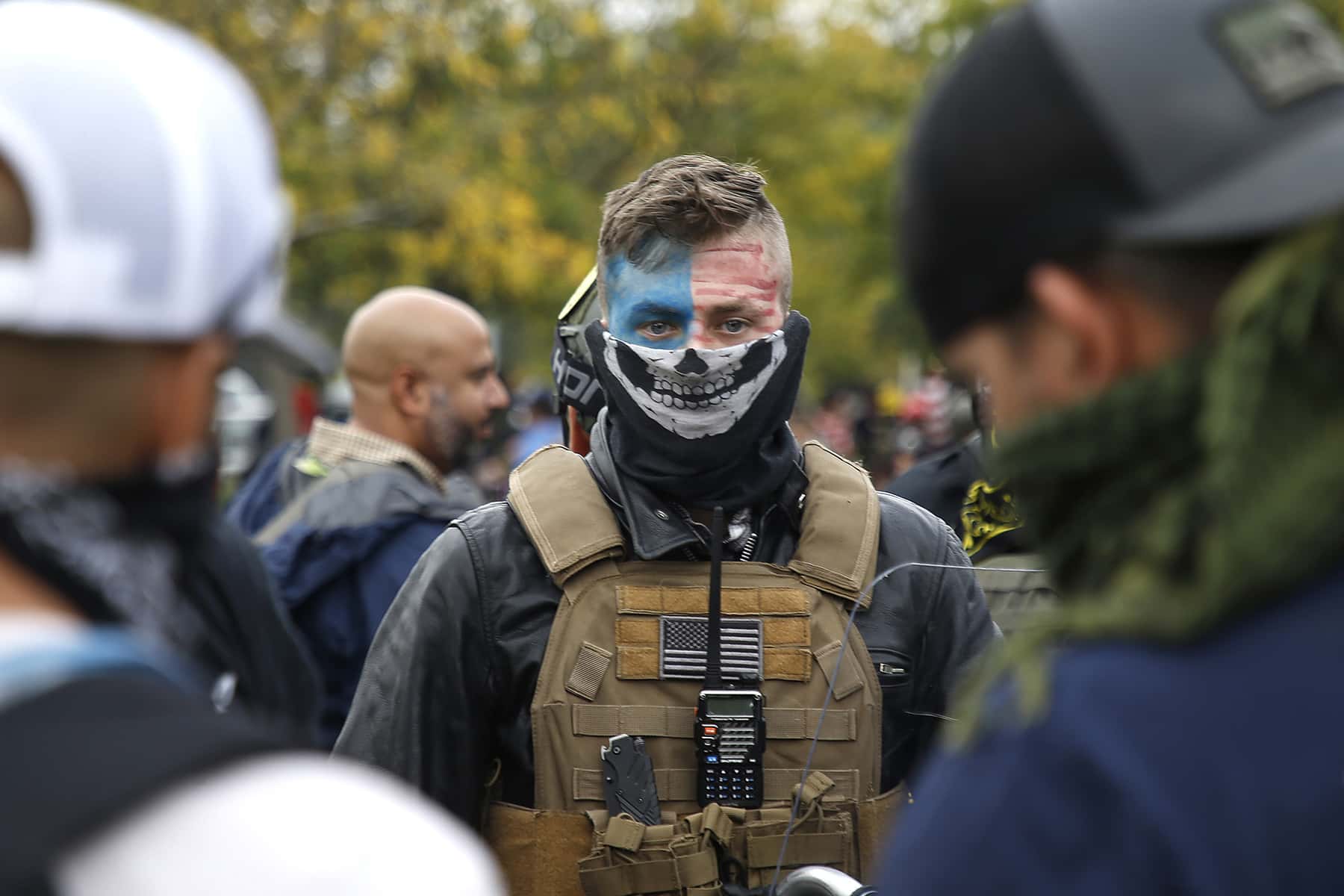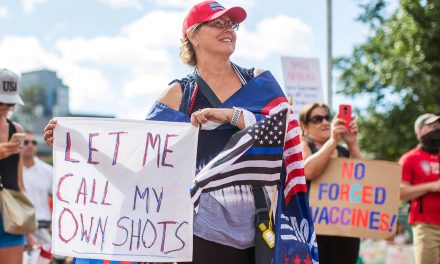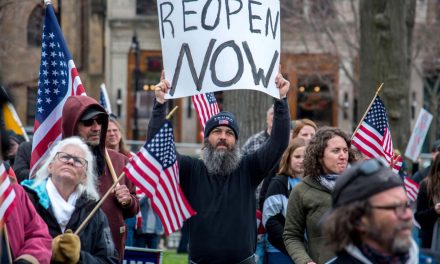
On 6 January, a mob including White Supremacists and far-right militants stormed the U.S. Capitol as lawmakers were certifying Joe Biden’s election victory. The attack followed mass shootings by white supremacists, like in El Paso in 2019 and a Pittsburgh synagogue the year before, and public violence by far-right militants at rallies across the country since Donald Trump’s election.
The Biden administration now seeks to turn the attention of the post-9/11 counterterrorism enterprise toward “domestic violent extremists.” But in making this shift, it is vital that we learn from our mistakes rather than simply repeating them. Already officials are headed down the same problematic path we took 20 years ago, considering proposals to expand counterterrorism authorities and using ideology as an indicator of potential violence.
These approaches are sure to backfire. Instead, our government should direct its focus toward pursuing and punishing acts of violence that it has too long ignored, using the ample tools at its disposal and without regard to ideology.
After 9/11, Congress raced to provide the government with new counterterrorism authorities. Within weeks of the attacks, Congress passed the Patriot Act, vastly expanding the government’s ability to secretly collect the personal information and communications data of Americans.
Later examinations showed these authorities were easily abused to infringe on the privacy rights of Americans. The one program that was subject to extensive independent review was found to be all but useless in identifying terrorist plots – not to mention illegal.
Now the White House is seriously considering proposals to give law enforcement new statutory authority to take on domestic terrorism, even though the FBI already has significant legal authority in this area – as the multitude of federal charges against more than 500 people who attacked the Capitol attest.
Indeed, an entire chapter of the U.S. criminal code is devoted to terrorism. It contains 57 federal crimes of terrorism, 51 of which apply to domestic acts, not to mention dozens of other federal statutes that can be and are used in domestic terrorism cases.
The FBI’s inadequate response to far-right violence results from a lack of will, not a lack of legal authority. The FBI has used its domestic terrorism authorities to target environmental, animal rights and racial justice activists. Yet the FBI doesn’t even track the number of murders committed by White Supremacists each year, much less consistently investigate these crimes as domestic terrorism.
Expanding counterterrorism authorities will not solve this attention deficit. To the contrary, both history and recent events suggest that new laws could become tools in the future for FBI agents to target those seeking to reform systems of structural racism and social inequity rather than those committing racist violence.
The Biden administration has also revived an Obama-era program designed to counter violent extremism (CVE), which relied on widely discredited theories of terrorist radicalization that painted Muslim religious practices and the expression of political grievances as precursors to violence. The Biden administration’s version has been rebranded as the Center for Prevention Programs and Partnerships (CP3), but it adopts the same basic model.
Like CVE, the CP3 program seeks to train law enforcement officials, educators, public health officials, social workers and private citizens to identify and report people who show purported warning signs that they might commit an act of “targeted” violence or terrorism sometime in the future. These supposed indicators include some combination of vague and commonplace characteristics like holding a grievance, being socially alienated and feeling hopeless.
In addition to falsely labeling people in need as dangerous, this flawed approach corrodes the trust that teachers, coaches, religious leaders, therapists and others need to serve as mentors, provide treatment or otherwise help people work through difficult times in their lives. It also opens a pipeline for channeling well-documented societal biases into an already corrupted “pre-crime” law enforcement surveillance system.
As for law enforcement agents, directing them to counter “radical” ideologies or identify ill-defined “concerning behaviors” will undoubtedly lead to the targeting of marginalized groups who challenge the status quo, rather than White Supremacists who have long been deeply embedded in powerful government institutions like law enforcement and the military. History provides ample evidence of this point: ideas that have stood in opposition to established structures of power, such as civil rights, labor organizing, or women’s suffrage, are the ones law enforcement has treated as “radical.”
Instead of using dubious methods to predict the next mass shooter, law enforcement should address deadly violence that is already occurring. Police and prosecutors have turned a blind eye to violence at far-right rallies around the country where counter-protesters were shot and beaten, including by some perpetrators who later stormed the Capitol.
According to media reporting, three far-right militants who tried to break into the Oregon state capitol the month before also participated in the Capitol riots, yet remain uncharged. More broadly, despite spending more than $100bn annually on policing, more than half of violent crime goes unsolved each year, with racial minorities disproportionately feeling the impact of this law enforcement inaction.
Until recently, the Department of Justice has failed to prioritize the investigation and prosecution of White Supremacist violence – treating it as a lesser threat than so-called “eco-terrorism,” which has cost zero American lives. Shortly before the attack on the Capitol by a mob that included active members of law enforcement, FBI managers disavowed a 2006 bureau intelligence assessment warning of White Supremacist infiltration of police agencies and refused to participate in a congressional hearing to examine the issue. An FBI intelligence report issued after the Capitol attack substantiated the findings of the 2006 assessment.
The government’s misplaced priorities are reflected in – and enabled by – its failure to systematically track White Supremacist violence. This failure results from several practices. For one thing, the justice department defers investigations of hate crime and most violent crime to state and local police, so many of the violent crimes committed by White Supremacists are completely absent from federal databases.
When the justice department does investigate White Supremacist violence, the investigations fall within several different program categories, including domestic terrorism, civil rights violations, and gang crimes.
But FBI reports assessing the threat from White Supremacist violence count only those crimes it categorized as domestic terrorism. Accordingly, the FBI’s data severely underestimates the threat White Supremacist violence poses, which in turn results in misallocations of domestic terrorism resources.
Repurposing failed “War on Terror” tactics is not the answer. Adequately prioritizing White Supremacist violence starts with maintaining accurate data about the crimes these groups commit – not casting an ideological dragnet. The justice department should then use its abundant existing authorities to address violent crime, focusing its resources where the data shows they are most needed.
Hаrshа Pаndurаngа
Jоhn Lаmpаrskі
Portions originally published on The Guardian as Two decades after 9/11, the real threat to the US is our own far right
Hаrshа Pаndurаngа is a counsel with the Liberty & National Security Program at the Brennan Center for Justice at New York University School of Law. This essay is co-published with the Brennan Center for Justice at NYU School of Law as part of a series exploring new approaches to national security 20 years after 9/11.
Help deliver the independent journalism that the world needs, make a contribution of support to The Guardian.














